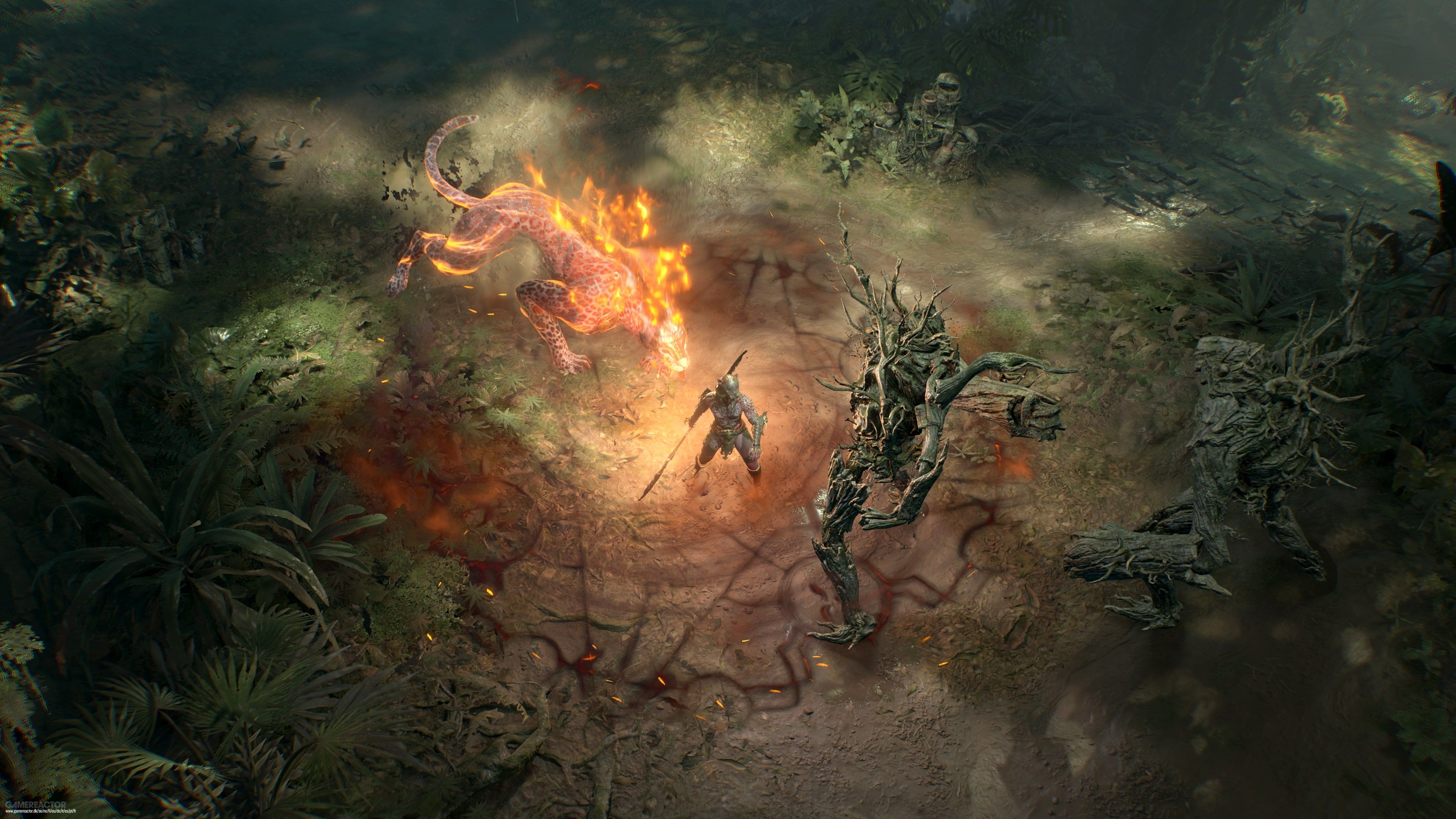Diablo 4 Strongholds Guide Nuovo
Gratis
In stock
american
Strongholds in Diablo 4 are fortified zones consumed by demonic corruption, offering some of the most challenging combat encounters in the open world. They act as self-contained events with layered objectives, elite enemies, and final bosses that demand strong builds and careful planning. Unlike typical dungeons, these battles unfold directly within Sanctuary's regions, connecting seamlessly to exploration and story progression while rewarding players with loot, renown, and world-altering outcomes.
Each of the five main regions—Fractured Peaks, Scosglen, Dry Steppes, Kehjistan, and Hawezar—contains three Strongholds, making a total of fifteen across the game. These locations appear as red icons on the map until players purge them of corruption. Enemies inside usually outlevel the player by at least two levels, adding tension and difficulty that makes preparation essential. Clearing one not only grants powerful rewards but can unlock waypoints, merchants, and new questlines, permanently transforming the area.
The process of reclaiming a Stronghold typically involves completing objectives like destroying demonic altars, defeating cult leaders, or slaying bosses tied to the corruption. Once the main threat is eliminated, the land is restored, light returns to the area, and new opportunities open for players. Some Strongholds even unlock dungeons or side quests that deepen the lore of Sanctuary and provide extra chances for high-value loot.
Taking on a Stronghold solo is possible, but cooperative play is often more effective, especially at higher world tiers. Working with others allows classes to complement each other's strengths, making it easier to handle waves of enemies or manage boss phases. Coordinated teams can clear objectives faster and maintain consistent momentum through multiple Strongholds in a single session.
Timing also matters when approaching these battles. Many players prefer to wait until reaching the mid-to-late 40s or higher world tiers before attempting them, since the difficulty scales with the player's level but the loot improves dramatically. This approach maximizes efficiency, giving access to better gear and faster progression into endgame content while keeping the challenge rewarding.
Strongholds serve as a crucial link between exploration, progression, and endgame preparation. They bring together the intensity of dungeon combat with the freedom of the open world, rewarding courage and strategy with meaningful world changes. Conquering them not only strengthens the player but reshapes Sanctuary itself, turning zones of despair into beacons of safety and progress. Find the latest Diablo 4 details, guides, and special offers at https://www.u4gm.com/d4-items
Each of the five main regions—Fractured Peaks, Scosglen, Dry Steppes, Kehjistan, and Hawezar—contains three Strongholds, making a total of fifteen across the game. These locations appear as red icons on the map until players purge them of corruption. Enemies inside usually outlevel the player by at least two levels, adding tension and difficulty that makes preparation essential. Clearing one not only grants powerful rewards but can unlock waypoints, merchants, and new questlines, permanently transforming the area.
The process of reclaiming a Stronghold typically involves completing objectives like destroying demonic altars, defeating cult leaders, or slaying bosses tied to the corruption. Once the main threat is eliminated, the land is restored, light returns to the area, and new opportunities open for players. Some Strongholds even unlock dungeons or side quests that deepen the lore of Sanctuary and provide extra chances for high-value loot.
Taking on a Stronghold solo is possible, but cooperative play is often more effective, especially at higher world tiers. Working with others allows classes to complement each other's strengths, making it easier to handle waves of enemies or manage boss phases. Coordinated teams can clear objectives faster and maintain consistent momentum through multiple Strongholds in a single session.
Timing also matters when approaching these battles. Many players prefer to wait until reaching the mid-to-late 40s or higher world tiers before attempting them, since the difficulty scales with the player's level but the loot improves dramatically. This approach maximizes efficiency, giving access to better gear and faster progression into endgame content while keeping the challenge rewarding.
Strongholds serve as a crucial link between exploration, progression, and endgame preparation. They bring together the intensity of dungeon combat with the freedom of the open world, rewarding courage and strategy with meaningful world changes. Conquering them not only strengthens the player but reshapes Sanctuary itself, turning zones of despair into beacons of safety and progress. Find the latest Diablo 4 details, guides, and special offers at https://www.u4gm.com/d4-items
Strongholds in Diablo 4 are fortified zones consumed by demonic corruption, offering some of the most challenging combat encounters in the open world. They act as self-contained events with layered objectives, elite enemies, and final bosses that demand strong builds and careful planning. Unlike typical dungeons, these battles unfold directly within Sanctuary's regions, connecting seamlessly to exploration and story progression while rewarding players with loot, renown, and world-altering outcomes.
Each of the five main regions—Fractured Peaks, Scosglen, Dry Steppes, Kehjistan, and Hawezar—contains three Strongholds, making a total of fifteen across the game. These locations appear as red icons on the map until players purge them of corruption. Enemies inside usually outlevel the player by at least two levels, adding tension and difficulty that makes preparation essential. Clearing one not only grants powerful rewards but can unlock waypoints, merchants, and new questlines, permanently transforming the area.
The process of reclaiming a Stronghold typically involves completing objectives like destroying demonic altars, defeating cult leaders, or slaying bosses tied to the corruption. Once the main threat is eliminated, the land is restored, light returns to the area, and new opportunities open for players. Some Strongholds even unlock dungeons or side quests that deepen the lore of Sanctuary and provide extra chances for high-value loot.
Taking on a Stronghold solo is possible, but cooperative play is often more effective, especially at higher world tiers. Working with others allows classes to complement each other's strengths, making it easier to handle waves of enemies or manage boss phases. Coordinated teams can clear objectives faster and maintain consistent momentum through multiple Strongholds in a single session.
Timing also matters when approaching these battles. Many players prefer to wait until reaching the mid-to-late 40s or higher world tiers before attempting them, since the difficulty scales with the player's level but the loot improves dramatically. This approach maximizes efficiency, giving access to better gear and faster progression into endgame content while keeping the challenge rewarding.
Strongholds serve as a crucial link between exploration, progression, and endgame preparation. They bring together the intensity of dungeon combat with the freedom of the open world, rewarding courage and strategy with meaningful world changes. Conquering them not only strengthens the player but reshapes Sanctuary itself, turning zones of despair into beacons of safety and progress. Find the latest Diablo 4 details, guides, and special offers at https://www.u4gm.com/d4-items
0 Commenti
0 condivisioni
1818 Views



